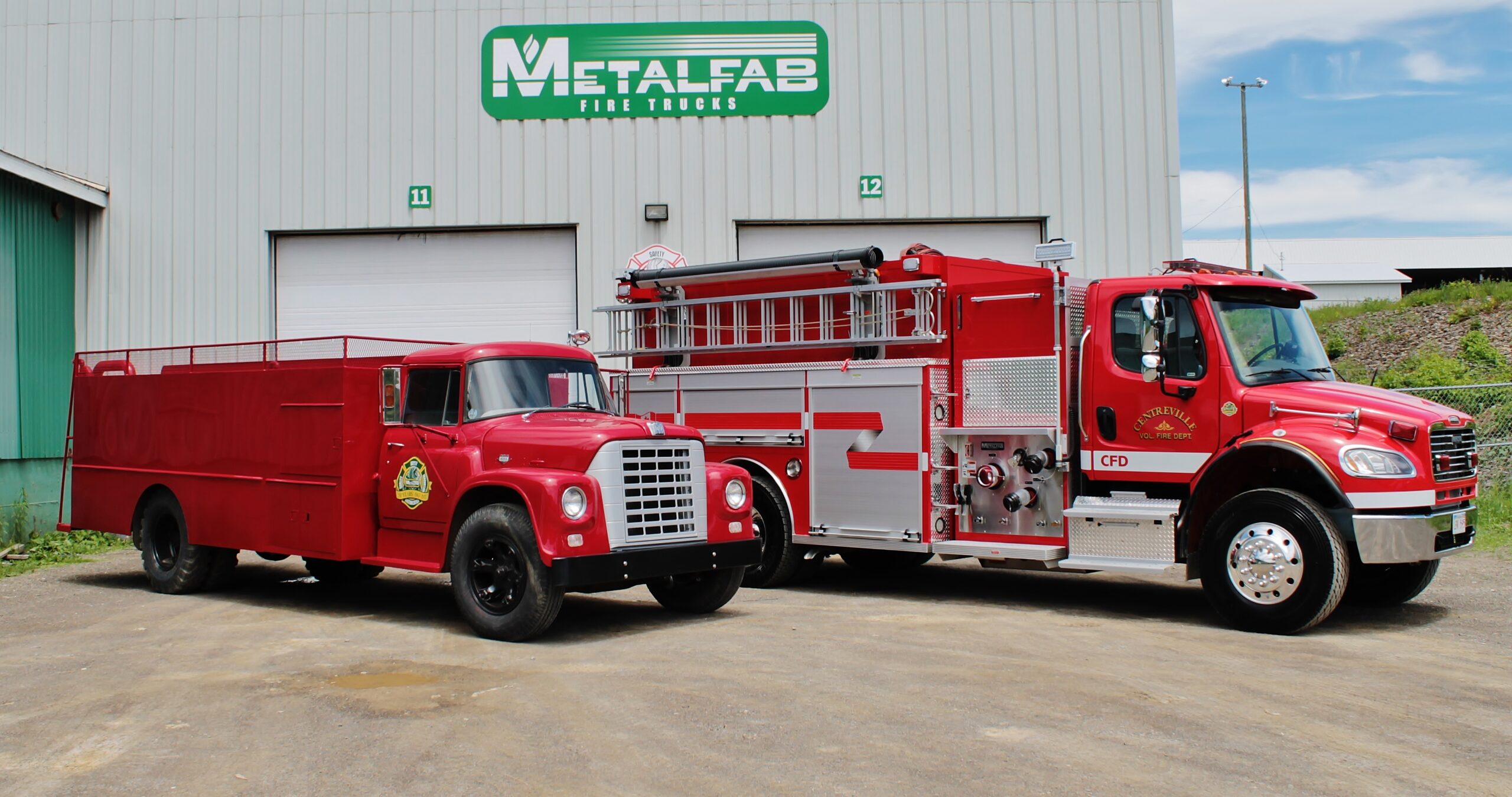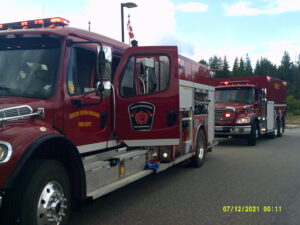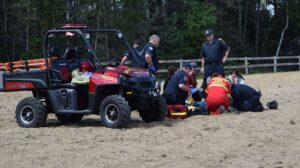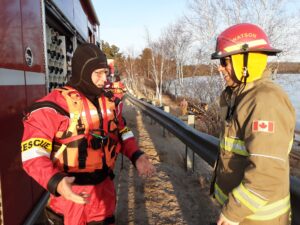
Department Spotlight: Machar, ON
Risto Maki is Fire Chief at the South River-Machar Fire Department in Ontario, Canada. He’s been chief for 13 years, with the position requiring that he be full time for the last 8 years. Risto will be completing his 30th year as a firefighter this August after starting his fire services career in August of 1992 on the day he turned 18. He has also completed 18 concurrent years in Emergency Medical Services (EMS) prior to becoming Fire Chief.
Risto was drawn to the fire service after his father joined in 1981. Back in the day, the ambulance service ran out of the local fire hall, and his father responded to approximately 400 calls each year. That’s a little over a call a day. As a child, Risto was very involved with the fire service community and grew up in that culture of camaraderie and teamwork. Ultimately, this is why he decided to join as soon as he was old enough.
This issue, we want to spotlight Risto and the South River-Machar Fire Department for their excellence in service and dedication to protecting the Machar and surrounding communities and keeping everyone in the area safe and sound.

Throughout the years, what has been your favorite memory with the department?
It has to be the staff. Especially now, I’m blessed with the most dedicated group you could ask for. The support and teamwork they exhibit towards the department and community, not only in emergency response but in everything else they do, is second to none. They never cease to amaze me with the skills they pull out of the hat. No matter the challenges that are thrown their way, they always rise to the occasion. Every experience with them really sticks with me.
What is the size of your department?
We’re a single station hall. At full capacity we have 25 firefighters, including myself full time. Last year we also brought on a part-time Fire Prevention Officer. The other 23 are all volunteers.
Tell us a little bit about what your community is like.
We provide fire protection services for shared municipalities. We cover the village of South River, which is a small urban community of about 1,100 people. We also service the Township of Machar, which is primarily rural with a population of about 900. The populations of these areas typically double around summertime.
In addition to South River and Machar, we partner with the Sunridge-Strong Fire Department to serve the Township of Jolly. We’re a little bit unique in that our establishing regulating bylaw authorizes us to leave our municipality to protect life, so we get tasked with some sometimes unusual rescue calls.
In terms of your percentage of response area, is it mostly rural, commercial, or industrial?
It’s definitely a mix. Single-family dwellings make up the majority of our calls. However, we do have a strong industrial component with the manufacturers located in the area. Our most common calls are rescue oriented in nature, like vehicle collisions and water rescues.
Are there any unique qualities in your communities that present special challenges to you?
We have a hydro protected area and a non-hydro protected area where it can be challenging to get fire apparatus in to fit those needs. Equipment needs to be designed differently for each application. We’ve tried to design our apparatus accordingly so it supports the different roles required for each municipality.
For example, we run a mini pumper and a full-size commercial pumper. The mini pumper is the first out the door for rural firefighting and serves as an attack pumper. Our full-size pumper has a dump capacity on it, so it works as a tanker but also supplements personnel and nurse pumps its first load when it arrives on the scene. This way we are able to use both apparatus at maximum capacity.
Has the highway up the middle of town changed the nature of your calls at all?
It certainly changed the demographics and the challenges we face on the highway. Initially I believed, maybe naively, that our calls for motor vehicle collisions would drop off, but we’re actually responding to just as many if not more collisions since the highway went in. The calls have, however, changed in nature. We’re seeing a lot more single-vehicle rollovers and animal strikes and less head-on collisions.
Going back to the fire truck side of things, how many trucks does your department run?
We have five apparatus including one pickup, one remote rescue vehicle, and one inflatable boat.
What’s the main challenge you face around your trucks and apparatus?
Capital procurement. As I mentioned, we are a shared service municipality, so we need to balance our priorities and objectives with our partnering municipalities when it comes time to purchase equipment and apparatus.
Can you tell us about your experience with Metalfab as a fire truck manufacturer?
It’s been excellent. The first truck I was involved with designing through Metalfab was our heavy rescue. That was a 2010 delivery on a 2009 chassis, so we beat the DEF system on that, which is certainly beneficial to us now. The advantage we had was unlimited access to design. As you know from working with me, I like to make lots of changes to make the apparatus fit our needs, and you accommodated that.
To date, we’ve purchased three full trucks from Metalfab, and you also designed our remote-rescue skid unit.
What have you liked about working with Metalfab over the years?
The design support and service have been awesome. We’ve never had an easy order. In fact, I think I was the first to say “I want 28 feet or less and 3,000 gallons of water” to you. That sort of flexibility is what we need in a manufacturer, and we appreciate your commitment to responding quickly and getting designs right.
